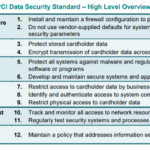In a world where digital security is paramount, it is crucial to understand the key differences between free and paid antivirus software when it comes to protection levels. While both types aim to safeguard your digital life, their approaches and effectiveness may vary. This article explores the nuances and distinctions between these two options, shedding light on the varying levels of protection they provide. By delving into the comprehensive features and advanced technologies offered by paid antivirus software, as well as examining the potential limitations of free versions, this article aims to equip you with the knowledge to make an informed decision regarding your digital security.

Overview of Antivirus Types
Antivirus software plays a crucial role in protecting our devices from malware, viruses, and other forms of cyber threats. Two main types of antivirus software are available in the market: free antivirus software and paid antivirus software. Each type has its pros and cons, and understanding their differences can help you make an informed decision to ensure the security of your devices. In this article, we will explore the key differences between free and paid antivirus software in terms of protection levels.
The Concept of Free Antivirus Software
Free antivirus software refers to the antivirus programs that are provided to users without any cost. These software options are typically offered by reputable antivirus companies and aim to provide basic protection against common threats. While free antivirus software can offer a certain level of protection, it often lacks advanced features and may have limitations in terms of comprehensive threat detection and prevention.
Introduction to Paid Antivirus Software
Paid antivirus software, on the other hand, involves a monetary investment to access enhanced security features and comprehensive protection. These software programs are typically designed by established antivirus companies and are known for their robust threat detection and prevention capabilities. Paid antivirus software often includes additional advanced features, such as firewall protection, secure browsing, and secure password management, which can further enhance the security of your devices.
Method of Detection
The method of detection employed by antivirus software plays a crucial role in identifying and eliminating threats. Free antivirus software usually relies on signature-based detection, where it compares the patterns of files and programs against known malware signatures. While this approach is effective against known threats, it may struggle with detecting new and emerging threats that do not yet have established signatures.
Paid antivirus software often employs a combination of signature-based detection, heuristic analysis, and behavior-based detection techniques. Heuristic analysis allows the antivirus software to identify suspicious behavior patterns and take action accordingly. Additionally, behavior-based detection analyzes the behavior of certain programs to determine if they are acting in a malicious manner, providing an extra layer of protection against new and unknown threats.
Resource Usage
One important consideration when choosing an antivirus software is its impact on system resources. Free antivirus software tends to have a lower impact on system performance compared to paid antivirus software. This is because free antivirus programs generally have fewer features and a lighter footprint, minimizing their usage of CPU power and memory resources. However, it is worth noting that the resource usage may vary depending on the specific antivirus software and its optimization.
Paid antivirus software, while typically offering stronger protection, may have a slightly higher impact on system resources due to its comprehensive features and active monitoring. However, reputable paid antivirus software developers work towards optimizing their software to minimize resource usage without compromising the security levels offered.
Efficiency in Detecting New Threats
The ability to detect and combat new and emerging threats is a crucial aspect of antivirus software. Free antivirus software may struggle to keep up with the constantly evolving threat landscape due to its reliance on signature-based detection. As mentioned earlier, signature-based detection can often overlook new threats that do not have established signatures.
In contrast, paid antivirus software, with its combination of signature-based detection, heuristic analysis, and behavior-based detection techniques, is generally more efficient in detecting and combating new threats. The integration of multiple detection methods provides a stronger defense against emerging threats, ensuring a higher level of protection for your devices.
Web Protection Capabilities
In today’s digital age, where online threats are prevalent, the web protection capabilities of antivirus software are of utmost importance. Free antivirus software may offer basic web protection features, such as blocking malicious websites and scanning downloaded files for threats. However, the extent of web protection may be limited compared to paid antivirus software.
Paid antivirus software often provides advanced web protection features, such as real-time scanning of web pages, protection against phishing attacks, and secure browsing. These features work together to safeguard your online activities and prevent you from falling victim to various online threats, including malware-infected websites and phishing scams.
Advanced Features
Paid antivirus software is often distinguished by its advanced features, which can enhance the overall security of your devices. These features may include firewall protection, which monitors and controls network traffic, ensuring that only authorized connections are allowed. Additionally, paid antivirus software may offer secure password management, enabling you to store and manage your passwords securely.
While free antivirus software may lack these advanced features, it is important to note that not all users may require them. For users who prioritize basic protection without the need for additional features, free antivirus software can still provide a satisfactory level of security.
Customer Support
Customer support is an essential aspect to consider when choosing antivirus software, as timely assistance can be crucial in dealing with security incidents or technical difficulties. Free antivirus software often offers limited customer support options, such as FAQs and community forums, where users can seek assistance from other users or antivirus experts.
Paid antivirus software typically offers more comprehensive customer support options, including email support, live chat, and phone support. These options allow users to seek immediate assistance from a dedicated support team, ensuring a prompt resolution to any security-related issues or concerns.
Frequency of Updates
Regular updates are vital for antivirus software to stay up to date with the latest threats and security vulnerabilities. Free antivirus software may have a less frequent update cycle compared to paid antivirus software. While the specific update frequency can vary depending on the software provider, paid antivirus software typically receives more frequent updates, ensuring timely protection against emerging threats.
Being proactive in updating antivirus software is crucial, as new threats can emerge at any time. Regular updates provide the necessary patches and signature updates to keep your devices protected from the latest threats and vulnerabilities.
Ease of Use
The ease of use and user-friendliness of antivirus software can significantly impact its effectiveness. Free antivirus software is often designed with simplicity in mind, providing a straightforward user interface and minimal configuration options. This simplicity can be beneficial for users who prefer a hassle-free experience and do not require extensive customization.
Paid antivirus software may offer more intricate user interfaces and advanced configuration options, allowing users to fine-tune their security settings according to their specific needs. While this may offer a higher degree of control and customization, it may also require more technical expertise to optimize the software for maximum protection.
Overall Protection Levels
When comparing the protection levels offered by free and paid antivirus software, it is crucial to consider the comprehensive nature of the security provided. Free antivirus software may offer sufficient protection against common threats, but its limitations in terms of detection capabilities and advanced features leave room for potential vulnerabilities.
Paid antivirus software, with its more robust detection methods, advanced features, and comprehensive protection, generally provides a higher level of security for your devices. The integration of various defense mechanisms and regular updates ensures that your devices are well-protected against both known and emerging threats.
In conclusion, the choice between free and paid antivirus software should be made based on your specific security needs and requirements. Free antivirus software can offer a certain level of protection for users who prioritize basic security without the need for advanced features. On the other hand, paid antivirus software provides enhanced protection, advanced features, and dedicated customer support, making it ideal for users who prioritize comprehensive security and are willing to invest in their digital safety. Ultimately, striking a balance between the features, protection levels, and affordability of antivirus software is key to ensuring the security of your devices in an ever-evolving digital landscape.







